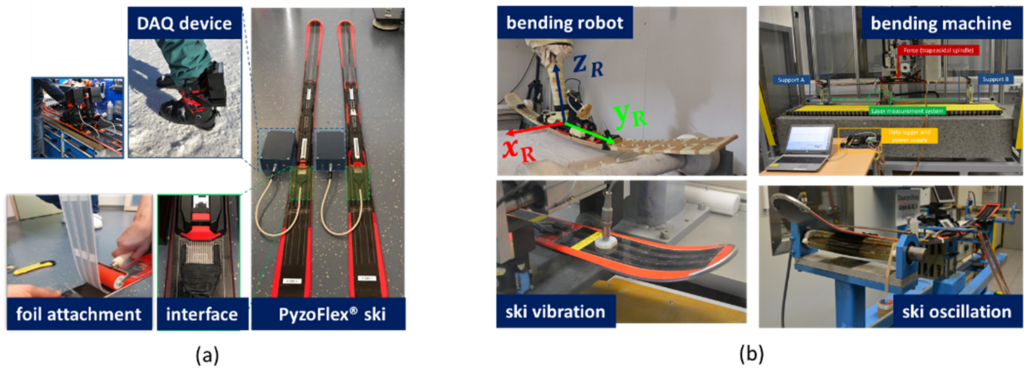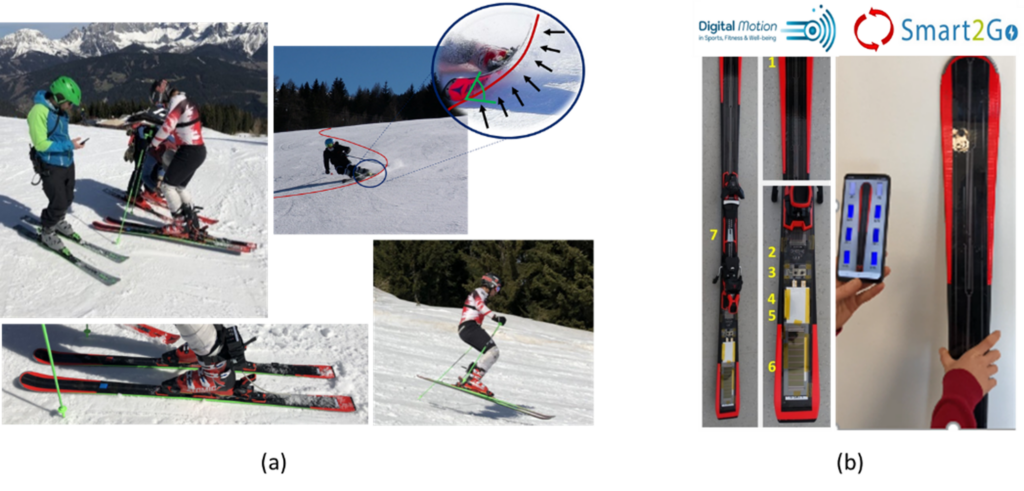The interaction between the ski and snow plays a pivotal role in determining skiing technique and performance. The defLECTION characteristics of the ski serve as a gateway to understanding the complex and multifaceted nature inherent in this dynamic process. An award-winning sensor ski based on PyzoFlex® technology was developed and validated in extensive investigations and tested in application-oriented field settings.
So far, only proof-of-concept studies with superficial validation approaches have been conducted for existing strain gauge-based prototypes for measuring ski deflection. Consequently, no useful real-world application is currently available. This lack of useful real-world applications may be attributed to the complex serial implementation of strain gauge sensors. Novel so-called PyzoFlex® sensors, on the other hand, can be manufactured using a cost-effective screen-printing process in different sizes and shapes, making them easily adaptable to ski instrumentation. Additionally, the ski’s dynamic characteristics are minimally influenced by these sensor foils due to their flexibility and negligible mass.
A PyzoFlex® ski prototype was developed as part of the Comet Project “DiMo” in collaboration with the Smart2go project, specifically with our partner Joanneum Research. The third-generation prototype is depicted in Figure 1a. To assess its reliability and validity of the sensor-based deflection analysis, a curvature model was developed and tested in both quasi-static and dynamic skiing-like bending settings (Figure 1b). Validity studies were conducted using high-precision lasers and an optoelectrical measurement system, which served as gold standards”.

In addition to extensive laboratory studies, application-oriented field measurements have been published, demonstrating the matching of curvature with well-known performance-relevant quantities (Figure 2a). The innovative application-oriented research presented by Christoph Thorwartl at the 9th International Congress on Science and Skiing was honoured with the prestigious Young Investigator Award. Furthermore, an energy-autonomous PyzoFlex® ski prototype further developed within the EU project Smart2Go has already been equipped with a flexible photovoltaic module, bendable batteries and an energy management system (Figure 2b). This noteworthy energy-autonomous prototype was honored with the oe-a award at the LOPEC congress in Munich.
PyzoFlex® technology presents a promising avenue for the development of intelligent ski equipment, as it reliably and accurately measures the segmental and temporal curvature of the ski. The data provide insight into performance analysis in alpine skiing. The practical importance of this data makes it valuable for a range of applications, including real-time feedback systems, customization of ski products, injury analysis and prevention, and development of indoor testing methodologies for assessing the quality of the ski to reduce time-consuming on-field ski tests.

For the future, however, further improvements of the prototype are planned (e.g., the integration of the sensor foils into the ski, enhancement and downsizing of the DAQ and implementation on the ski boot, reduction of the number of interfaces on the ski). Helmut Holzer, Director of Anticipation & Advanced Research at ATOMIC, expresses, “The knowledge gained is highly valuable and applicable for different application in winter sports. As a next step PyzoFlex sensors will be tested on FIS racing skis as well as a pre-study on race boots.”
